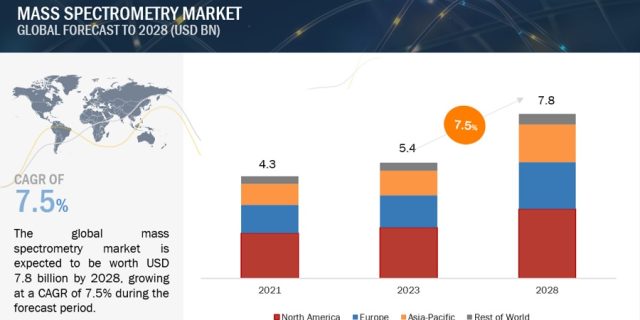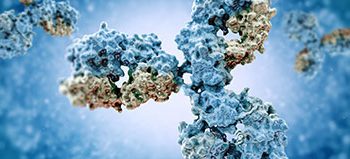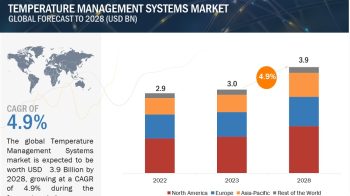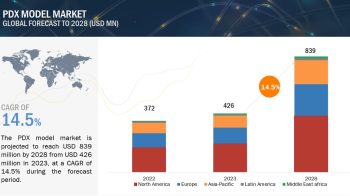
The global mass spectrometry market is projected to reach USD 7.8 billion by 2028 from USD 5.4 billion in 2023, growing at a CAGR of 7.5% during the forecast period. The growth of the market is largely driven by the global rise in growing focus on the quality of food products, pollution control, environmental testing and increase in crude and shale gas production. Furthermore, the increasing spending on pharmaceutical R&D across the globe is anticipated to further propel market growth.
Download a PDF Brochure: https://www.marketsandmarkets.com/pdfdownloadNew.asp?id=437
Mass Spectrometry Market by Product (Instrument (Triple Quadrupole, Q-TOF, FTMS, Quadrupole, TOF), Services), Sample Preparation (LC-MS, GC-MS), Application (Omics, Clinical, Environmental), End User (Pharma, Academia, F&B) & Region – Forecasts to 2028
Based on the product, the mass spectrometry is segmented into instrument and software & services. During the forecast period, instrument is expected to dominate the mass spectrometry market. The growth of mass spectrometry instruments will be driven by the procedural benefits offered by LC-MS and triple-quadrapole mass spectrometer.
Based on sample preparation technique, the mass spectrometry is segmented into GC-MS, LC-MS, ICP-MS, and others. During the forecast period, LC-MS are expected to dominate the mass spectrometry market. The growth is attributed to its several analytical advantages such as higher accuracy, improved lower detection limits and also its broad applicability to a wide range of rigorous demands of the analytical market.
Based on application, the mass spectrometry market is segmented into OMICS research, drug discovery, environmental testing, food testing, pharma-biopharma manufacturing, clinical diagnostics, applied industries, and other applications. During the forecast period, the OMICS research segment is estimated to hold the largest market share of the mass spectrometry market. The advancements in biological research in proteomics and genomics being the major driver for growth. The segment includes life science related research like Genomics, Proteomics and Metabolomics.
The mass spectrometry market covers five key geographies—North America, Europe, Asia Pacific, Latin America and Middle East. The market in North America accounted for the largest share of market in 2022. The large share of the market can be attributed to the strong presence of major pharmaceutical companies and the large number of life science research studies conducted in the region. Europe is expected to account for the second-largest share of the global mass spectrometry market. Factors such as the flourishing biotechnology industry and favourable R&D scenarios are driving the growth of the mass spectrometry market in Europe.
The mass spectrometry business is very competitive, with both established companies and newcomers competing for the same market share. As of 2022, the key players operating in the global mass spectrometry market are SCIEX AB (US), Thermo Fisher Scientific (US), Agilent Technologies (US), Waters Corporation (US), PerkinElmer Inc. (US), Shimadzu Corporation (Japan) and Bruker Corporation (US) among others.
Recent Developments of Mass Spectrometry Industry
- In January 2022, Thermo Fisher and Symphogen extended their collaborative partnership with aim to deliver workflows for simplified characterization and quality monitoring of complex therapeutic proteins using the Thermo Scientific Q Exactive Plus Orbitrap LC-MS/MS system.
- In February 2023, SCIEX announced collaboration with HighRes Biosolutions to bring customizable automation solutions powered by Cellario software, which would add automation benefits to the Echo MS system.
- In February 2022, Waters Corporation acquired Charge Detection Mass Spectrometry technology assets and intellectual property rights of Megadalton Solutions, Inc., to broaden its application in Cell and Gene Therapy.
- In September 2022, Agilent Technologies partnered with MOBILion Systems for ion mobility separation technology called Structures for Lossless Ion Manipulation (SLIM) on its Q-TOF mass spectrometers.


